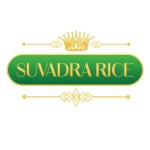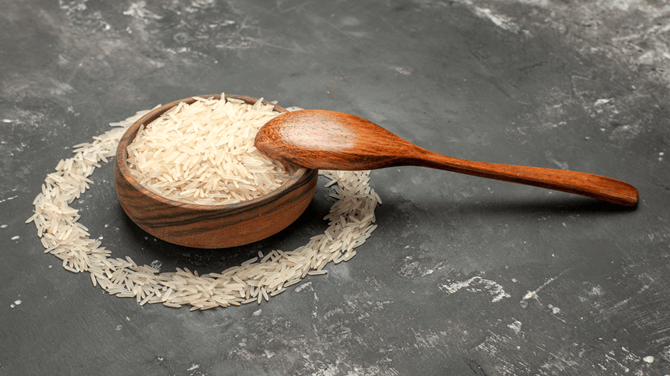As a modern retailer, you are far more than just a store owner; you are a professional curator. Every single product you decide to place on your shelf is a strategic choice—a choice that directly impacts your customers' trust, your store's hard-earned reputation, and, most critically, your bottom line. In a category as competitive, essential, and high-volume as rice, making the smartest and most informed choice is not just an advantage; it is a necessity for growth.
You see the labels on the bags every day: "Premium," "Special," "Classic," "Select." But what do these grades and classifications actually mean? Are they simply clever marketing terms, or do they represent a tangible, measurable difference in quality that your customers will genuinely notice and appreciate in their own kitchens?
Understanding the science and the art behind rice grading is the secret to smarter stocking and more profitable retailing. It empowers you to build a better, more strategic product portfolio, to confidently educate your customers, and to ultimately run a more successful business. As a direct-from-the-mill partner that many of the top wholesale rice distributors in India rely on for their own supply, we at Suvadra Rice believe in absolute transparency. This is your definitive guide to demystifying the world of rice grades, so you can understand exactly what you're buying and why it matters so much to your customers and your business.
The Four Pillars of Rice Grading: A Look Behind the Label
When our highly trained quality control experts grade a batch of rice, they are not just giving it a cursory look; they are meticulously analyzing it based on four critical, internationally recognized parameters. Understanding these pillars will make you a more knowledgeable and confident buyer.
1. Percentage of Broken Grains:
This is, without a doubt, the single most critical factor in determining the quality and the final cooking performance of rice. During the de-husking and polishing process, it is inevitable that some grains will break. A higher, more premium grade of rice will have a strictly controlled and minimal percentage of these "brokens."
- Why it Matters for Your Customer: This is the secret to a perfect texture. Whole, intact grains cook evenly and absorb water predictably, resulting in a fluffy, pleasing, and separate texture. Broken grains, on the other hand, cook much faster. They disintegrate, release excess starch, and turn mushy. This leads to a sticky, clumpy, and inconsistent final dish—the number one cause of customer complaints and dissatisfaction.
- Your Retail Advantage: By stocking a rice with a very low broken percentage, you are selling a product that performs reliably and consistently for your customers. This leads to happier, more satisfied customers, fewer complaints, and a significant reduction in costly returns.
2. Grain Length and Uniformity:
This parameter is a twofold assessment: it looks at the average length of the rice grains and, just as importantly, their consistency in size and shape throughout the batch.
- Why it Matters for Your Customer: A beautiful, long-grained rice has a very high visual appeal and is universally associated with premium quality. More importantly from a cooking perspective, uniformity is the key to even cooking. If a bag contains a random mix of long grains, medium grains, and fragments, they will all cook at different rates, resulting in a poor, unpredictable texture with some grains hard and others mushy.
- Your Retail Advantage: A visually appealing, uniform product looks significantly better on your shelf and commands a more premium perception from the customer. It justifies its price point through its appearance alone and reinforces your store's reputation for stocking high-quality goods.
3. Purity, Color, and Whiteness:
This is a comprehensive measure of the rice's cleanliness and its visual flawlessness.
- Why it Matters for Your Customer: Purity means the rice is completely free from any foreign matter like stones, dust, husk, or chaff. Color and whiteness refer to the absence of any discolored, damaged, chalky, or yellow grains. A pristine, pearly-white, and uniform appearance is a strong and reliable indicator of high-quality paddy and a sophisticated, technology-driven sorting process.
- Your Retail Advantage: This is your direct defense against quality complaints. When you source hygienically packed rice with fast delivery that has been through an advanced Sortex-cleaning process like ours, you are guaranteeing a pure and safe product. This builds immense and lasting trust with your customers.
4. Optimal Moisture Content:
This is a technical but absolutely vital aspect of rice quality. The rice must be dried to an optimal and consistent moisture level (typically between 12-14%) after harvesting and before milling.
- Why it Matters for Your Customer: Incorrect moisture content leads to a host of problems. If the moisture is too high, the rice is susceptible to mold, mildew, and pest infestation. If it is too low, the grains become overly brittle and are more likely to break during the cooking process.
- Your Retail Advantage: Selling rice with the correct and stable moisture content ensures a longer, safer shelf life, both in your store and in your customer's pantry. This reduces the risk of spoilage and product waste for both you and your customer.
A Practical Example: Decoding the Suvadra Miniket Grades
Let's apply this expert knowledge to our own Suvadra Rice products to make it crystal clear.
- Suvadra Premium Miniket: This is our absolute top grade, representing the best of our production. When you stock this, you are offering:
- The longest average grain length with maximum, near-perfect uniformity.
- An extremely low, near-zero percentage of broken grains.
- A flawless, pearly-white color, a direct result of our rigorous, multi-pass Sortex sorting.
- The Business Case: Stock this to cater to your most discerning, quality-conscious customers. It is a high-margin product that establishes your store as a premium destination for quality staples.
- Suvadra Special Miniket: This is our excellent and highly popular value grade. It is still a very high-quality product, but the parameters are slightly different to make it more accessible. It will have:
- Still long grains, but with slightly less uniformity than the absolute top Premium grade.
- Still a very low percentage of brokens, but it might be a fraction higher than our top grade.
- The Business Case: This is your high-velocity workhorse. It delivers the premium Miniket experience at a more accessible price point, making it the perfect choice for the customer looking for the best rice for daily use in Indian households.
The Smart Retailer's Verdict
Understanding these grades transforms you from a simple reseller into an expert curator and a trusted advisor. You can now confidently explain the value difference to your customers, build a strategic rice portfolio that caters to different price points and needs, and optimize your profitability.
By partnering directly with a mill like Suvadra Rice, you get access to this expertise and can confidently source non basmati rice at wholesale price online and offline, knowing with certainty the exact quality you are receiving. This is how you stock your shelves for success and become the trusted, go-to source for the top-rated rice brands for online purchase in your community.






Comments